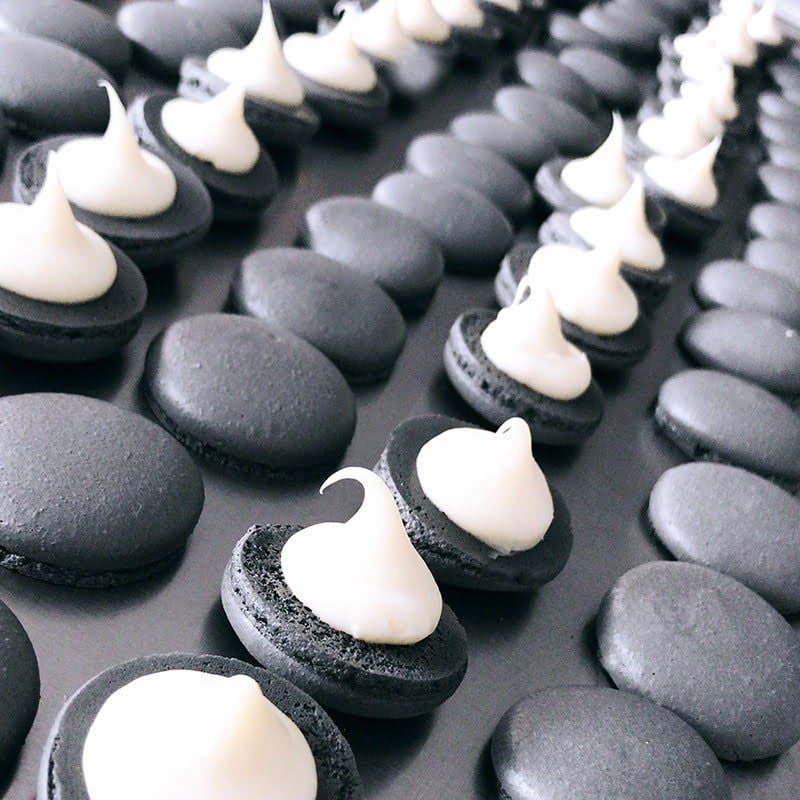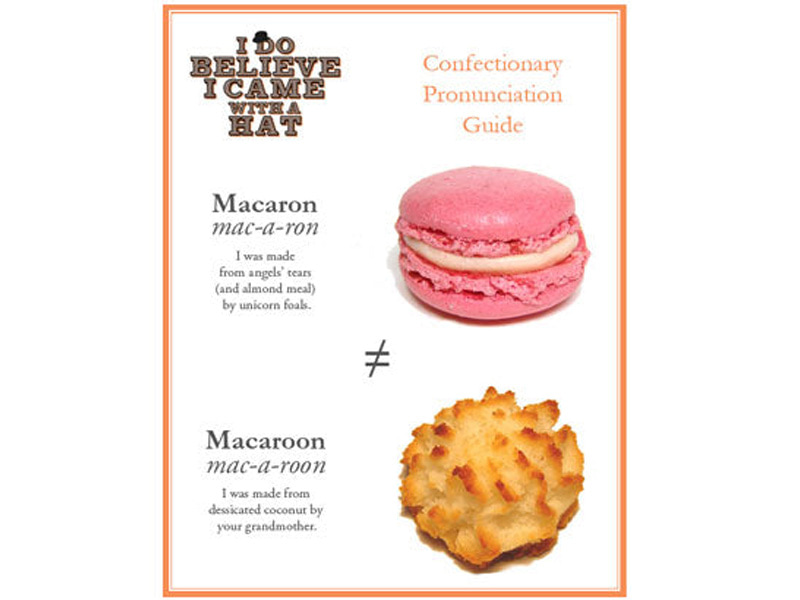Her Daim Moda: Makaron

Pastacılık sektörünün yıllardır en popüler ürünlerinden biri olan makaron; yumurta akı, şeker ve toz badem ile hazırlanan beze benzeri iyi yarıyı yumuşak bir dolgu ile birleştiren küçük kurabiye olarak tanımlamak yanlış olmaz diye düşünüyorum.
Aynı isimde, kendisi gibi glutensiz bir kurabiye olan macaroon ile sıkça karıştırılan makaron (macaron), farklı lezzetlerdeki çeşitleri, eğlenceli renkleri ve estetik görüntüsüyle her daim moda olmayı başaran bir petit four yani tek lokmalık tatlı. Öte yandan macaroon, toz hindistan cevizi, şeker ve yumurta akıyla yapılan ve bazen çikolataya batırılan çeşitleri de hazırlanan bir kurabiye. I Do Believe I Came with a Hat’ in hazırladığı bu görselde bu ayrımı görebilirsiniz.

Macaronların tarihi hakkında birçok görüş var. Bazı kaynaklar 9. yüzyılda Sicilya'ya gelen Arap askeri birliklerinin bölgeyi badem ezmesi benzeri, bademli tatlılarla tanıştırdığını söylerken, bazıları da 8. yüzyılda Venedik manastırlarında, İtalyan rahip ve rahibelerin öğütülmüş badem ve şeker bazına bazı malzemeler ekleyerek çıtır kurabiyeler pişirdiğini iddia ediyor ve bu kurabiyeler, şekillerinden dolayı “priest’s belly buttons (rahibin göbek deliği)” olarak adlandırılıyorlar.
Larousse Gastronomique, makaronun Rönesans döneminden kalma Venedik kökenli bir tatlı olduğunu belirtse de, makaronun kökeni hakkında anlatılan en yaygın hikaye, İtalya 4 Kraliçesi Catherine de' Medici 1533'te Fransa Kralı II. Henry ile evlendiğinde kraliçenin pasta şeflerinin bu tarifi beraberlerinde Fransa’ya getirdikleri yönünde. Efsaneye göre, 1500'lü yıllarda Kral II. Henry, Catherine de' Medici’ye evlenme teklif ettiğinde İtalya kraliçesi, teklifi kabul etmek için Macaronage sanatının ustaları olan İtalyan pasta şeflerini yanında getirmeyi şart koşmuş. 1830'larda makaronlar iki bisküvi olarak bir araya getirilip ve arası jöleler, 5 baharatlar veya likörlerle dolduruldu. Modern makaronların itibarı, 20. yüzyılın başlarında Paris'in ünlü çay salonu olan Ladurée of Paris’e ait.
Makaron “ince hamur” anlamına gelen macaroni - maccherone kelimelerinden türemiştir.
İtalyan mereng ve Fransız merengle hazırlanan iki farklı çeşidi vardır.
Benzer kurabiyeler, farklı kültürlerde, farklı isimler ile yer almaktadır. İtalya: amaretto cookies, veya amaretti - kayısı çekirdeği ve acıbademli. / brutti ma buoni - bu kurabiyeler daha fazla yumurta akı içerdiği için şekillerini koruyamıyorlar ve ortaya çıkan bu biçimsiz görüntü sebebiyle “çirkin ama iyi” anlamına gelen bu isimle anılıyorlar. / pignoli - çam fıstığı ile hazırlanıyor, ve pinoccate - çam fıstığı ile kaplanarak ve vanilya ile lezzetlendirilerek yapılıyor.
- Türkiye: acı badem kurabiyesi.
- İsviçre: luxemburgerli - Fransız stiline benzer ama daha hava gibi hafif.
- İspanya: carajitos - fındıkla hazırlanıyor; almendrados - limon kabuğu ile hazırlanıp badem parçalarıyla süsleniyor.
- Fas: almond Ghoriba - az miktarda tereyağ, limon kabuğu ve vanilya eklemesiyle çok daha az şeker kullanılarak hazırlanıyor.
- Japonya: makaron - yer fıstığı unuyla hazırlanan bir Japon makaron çeşidi, çay seremonisi sırasında servis edilebilmekte.
- İngiltere: ratafias - acı badem eklemeli.

Bilinen eski makaron tarifinin bulunduğu John Murrell’e ait, A Daily Exercise for Ladies and Gentlewomen (1617) kitabındaki French macaron tarifinde malzemeler arasında yer alan ambergreece/ambergris malzemesi oldukça şaşırtıcı. Çünkü parfüm sektöründe kokunun kalıcılığını artırmak için kullanılan bu madde, aslında balinanın sindirim sisteminde üretilen bir madde iken makaron tarifinde yer alması çok ilginç.
